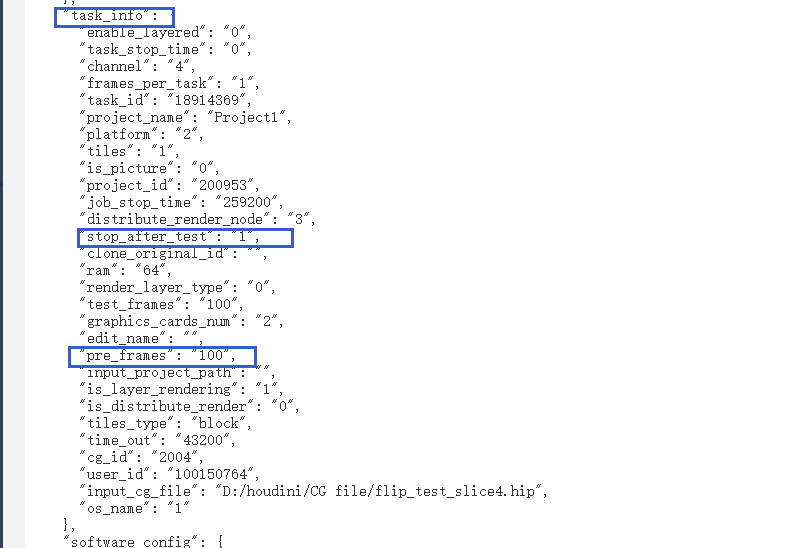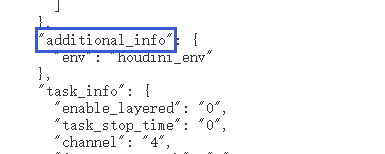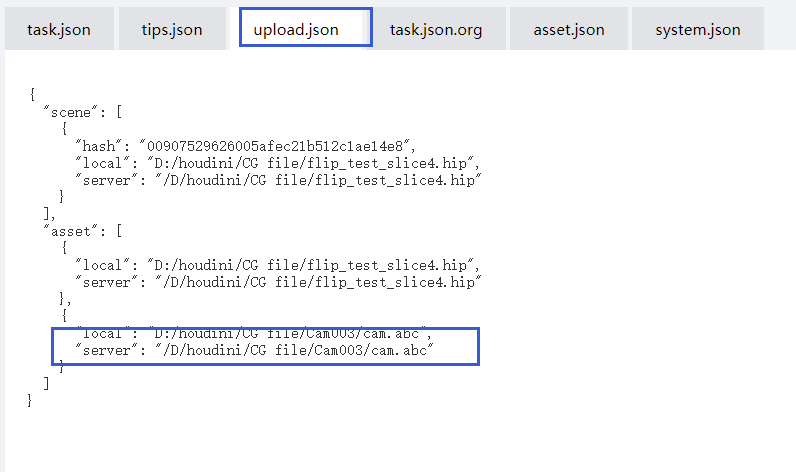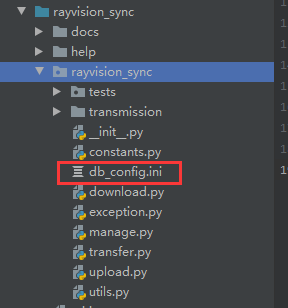SDK tutorial¶
I. Login authentication¶
render_para = {
"domain": "jop.foxrenderfarm.com", # If it doesn't work, you can use "task.foxrenderfarm.com"
"platform": "2",
"access_id": "xxxx",
"access_key": "xxxx",
}
api = RayvisionAPI(
access_id=render_para['access_id'],
access_key=render_para['access_key'],
domain=render_para['domain'],
platform=render_para['platform']
)
RayvisionAPI Parameters:
| Parameters | Type | Required | Default | Description |
|---|---|---|---|---|
| domain | string | Y | task.renderbus.com | China user:task.renderbus.com,Foreign user:jop.foxrenderfarm.com |
| platform | string | Y | 2 | platform ID,example: W2:"2", W6/qingyun:"6", GPU Region 1:"21" |
| access_id | string | Y | user authorization id | |
| access_key | string | Y | user authorization key |
II. Analysis of the scene¶
Analysis is independent(Maya / Houdini / Clarisse)
Example for Houdini:
from rayvision_houdini.analyze_houdini import AnalyzeHoudini
analyze_info = {
"cg_file": r"D:\files\CG FILE\flip_test_slice4.hip",
"workspace": "c:/workspace",
"software_version": "17.5.293",
"project_name": "Project1",
"plugin_config": {
'renderman': '22.6'
}
}
analyze_obj = AnalyzeHoudini(**analyze_info)
analyze_obj.analyse()
Instructions:
“workspace” is used to control the location of the generated json file. If workspace is not set, the default location is generated:
windows : os.environ["USERPROFILE"] + "renderfarm_sdk" Linux:os.environ["HOME"] + “renderfarm_sdk”
Analytically generated task.json is no “task_id”、“user_id”、”project_id” parameters,Users can choose to write the three parameters themselves, or to write the three parameters automatically when check.
AnalyzeHoudini Parameters:
| Parameters | Type | Required | Default | Description |
|---|---|---|---|---|
| cg_file | string | Y | Scenario files to analyze | |
| software_version | string | Y | The version of the software | |
| project_name | string | N | The project name | |
| plugin_config | dict | N | The plug-in configuration,example {'renderman': '22.6'} | |
| workspace | string | N | None | Analyze the location of the generated json file (avoiding duplication automatically adds a timestamp folder) |
III. Add special fields and update the json file interface¶
Only updates and modifications to the parameters of task.json and upload.json files are supported.
1. Modify the task.json¶
update_task_info(update_info, task_path)

from rayvision_api.utils import update_task_info, append_to_task, append_to_upload
update_task = {
"pre_frames": "100", # Sets the priority to render the first frame
"stop_after_test": "1" # Stop rendering after rendering the priority frame
}
update_task_info(update_task, analyze_obj.task_json)
2. task.json add custom parameters¶
The added custom parameters will be integrated into dictionary for key is “additional_info”. 【Warning】:Custom parameters will not take effect immediately. If you have this requirement, please contact our customer service。

custom_info_to_task = {
"env": "houdini_env"
}
append_to_task(custom_info_to_task, analyze_obj.task_json)
3. user custom upload.json¶
Support custom add file path to upload.json, will automatically deduplicate
append_to_upload(files_paths, upload_path)

custom_info_to_upload = [
r"D:\houdini\CG file\Cam003\cam.abc",
]
append_to_upload(custom_info_to_upload, analyze_obj.upload_json)
IV. Setting hardware Configuration and Validate json file¶
The hardware configuration is controlled by the parameter “hardwareconfigid”, which can be obtained through the API interface.(”API interfaces use methods” –> “Get platform hardware configuration information”)
Specify the hardware configuration by setting model, ram, gpuNum of hardware_config
hardware_config = {
"model": "Default", # Platform CPU: Default or Platform GPU: 1080Ti or 2080Ti
"ram": "64GB", # memory: 64GB or 128GB
"gpuNum": None # GPU platform requires input like 2*GPU, if CPU platform it is None
}
When validating,we set the hardware configuration based on the hardware_config and check whether there isuser_id, project_id, task_id in task.json,
If not, the interface is called to fetch the relevant parameters from the server and write task.json
check_obj = RayvisionCheck(api, analyze_obj)
task_id = check_obj.execute(hardware_config, analyze_obj.task_json, analyze_obj.upload_json)
V. Upload¶
Now there are two ways:
1.Upload the json file first and then upload the resource file according to “upload.json”:¶
Four json files are uploaded, and the transfer engine automatically starts uploading the scene, resource, and other files based on the upload.json file.
upload(self,task_id,task_json_path,tips_json_path,asset_json_path,upload_json_path, max_speed=None)
CONFIG_PATH = [
r"C:\workspace\work\tips.json",
r"C:\workspace\work\task.json",
r"C:\workspace\work\asset.json",
r"C:\workspace\work\upload.json",
]
upload_obj = RayvisionUpload(api)
upload_obj.upload(str(task_id), *CONFIG_PATH)
2.Uploading json files is completely independent of the user resources:¶
Uploading resources:upload_asset(self, upload_json_path, max_speed=None, is_db=True)
Upload json file: upload_config(self, task_id, config_file_list, max_speed=None)
CONFIG_PATH = [
r"C:\workspace\work\tips.json",
r"C:\workspace\work\task.json",
r"C:\workspace\work\asset.json",
]
UPLOAD = RayvisionUpload(api)
UPLOAD.upload_asset(r"C:\workspace\work\upload.json", is_db=False)
UPLOAD.upload_config("5165465", CONFIG_PATH)
【Warning】:You need a task ID to upload a json file, but you don’t need a task ID to upload a resource file;
The ‘is_db’ parameter in upload_asset is used to control whether or not a local database is needed. By default, a local database is used;
VI. Submit Task¶
api.submit(int(task_id))
VIII. Download¶
Download now provides 3 ways:
1. Supports custom downloads of hierarchical directory structures under each rendering task.¶
download(self, task_id_list=None, max_speed=None, print_log=True, download_filename_format="true",local_path=None, server_path=None)
download = RayvisionDownload(api)
download.download(download_filename_format="true", server_path="18164087_muti_layer_test/l_ayer2")
Warning:This method needs to provide the task ID if the “server_path” is not empty, and the task ID does not take effect if there is a custom “server_path”.
2. Realtime download, that is, the task rendering completed a frame began to download¶
auto_download(self, task_id_list=None, max_speed=None, print_log=False, sleep_time=10, download_filename_format="true", local_path=None)
download = RayvisionDownload(api)
download.auto_download([18164087], download_filename_format="false")
Warning:The method task ID cannot be empty
3. The task is not downloaded until all frames are rendered¶
auto_download_after_task_completed(self, task_id_list=None, max_speed=None, print_log=True, sleep_time=10, download_filename_format="true", local_path=None):
download = RayvisionDownload(api)
download.auto_download_after_task_completed([18164087], download_filename_format="false")
Warning: The method task ID cannot be empty
IX. Attachment: transfer configuration file¶
1. Transport configuration Settings include:
Select database type, database file path Settings, transfer log path Settings
2. The transport configuration file used by default: db_config.ini, The following figure

db_config.ini:
[TRANSFER_LOG_PATH]
transfer_log_path =
[DATABASE_CONFIG]
on = true
type = sqlite
db_path =D:\test\upload
[REDIS]
host = 127.0.0.1
port = 6379
password =
table_index = 0
timeout = 5000
[SQLITE]
temporary = false
The user can also modify the configuration for the template based on the default configuration and specify the database configuration file location, specifying a custom configuration file as follows.
from rayvision_sync.upload import RayvisionUpload
UPLOAD = RayvisionUpload(api, db_config_path=r"D:\test\upload\db_config.ini")
3. db_config.ini Parameters:
| Parameters | instructions | Default |
|---|---|---|
| transfer_log_path | Transfer engine log file path | |
| on | Whether to use a local database, true / false: Yes / No | true |
| type | Select database,currently only supports "redis" and "sqlite" | sqlite |
| db_path | The database file saves the path | |
| host | redis database host | 127.0.0.1 |
| port | redis database port | 6379 |
| password | redis database password | |
| table_index | Redis Repositories,cannot be empty | |
| timeout | Redis client connection timeout,unit ms | 5000 |
| temporary | When using sqlite database, if the uploaded record data is deleted after the completion of the upload, the default "false" will not be deleted | false |
4. transfer_log_path and db_path The priority rule for values is as follows:
db_config.ini custom paths are preferred if they are set;
No custom path is as follows:
transfer_log_path
Use environment variables first ‘RAYVISION_LOG’
Second use:
window: The environment variable “USERPROFILE”/<renderfarm_sdk>
Linux: The environment variable “HOME” /<renderfarm_sdk>
db_path
Use environment variables first ‘RAYVISION_LOG’
Second use:
window: The environment variable “USERPROFILE”/<renderfarm_sdk>
Linux:The environment variable “HOME” /<renderfarm_sdk>